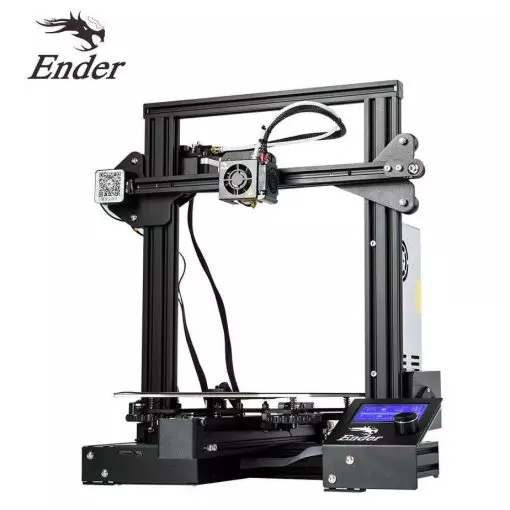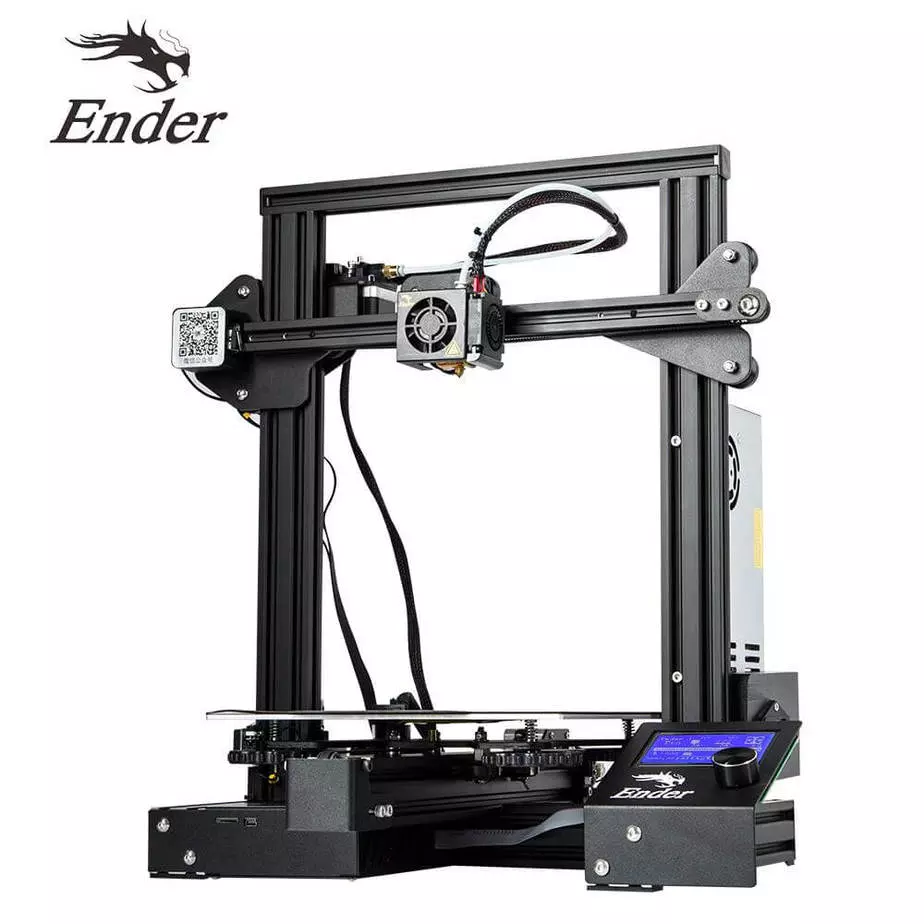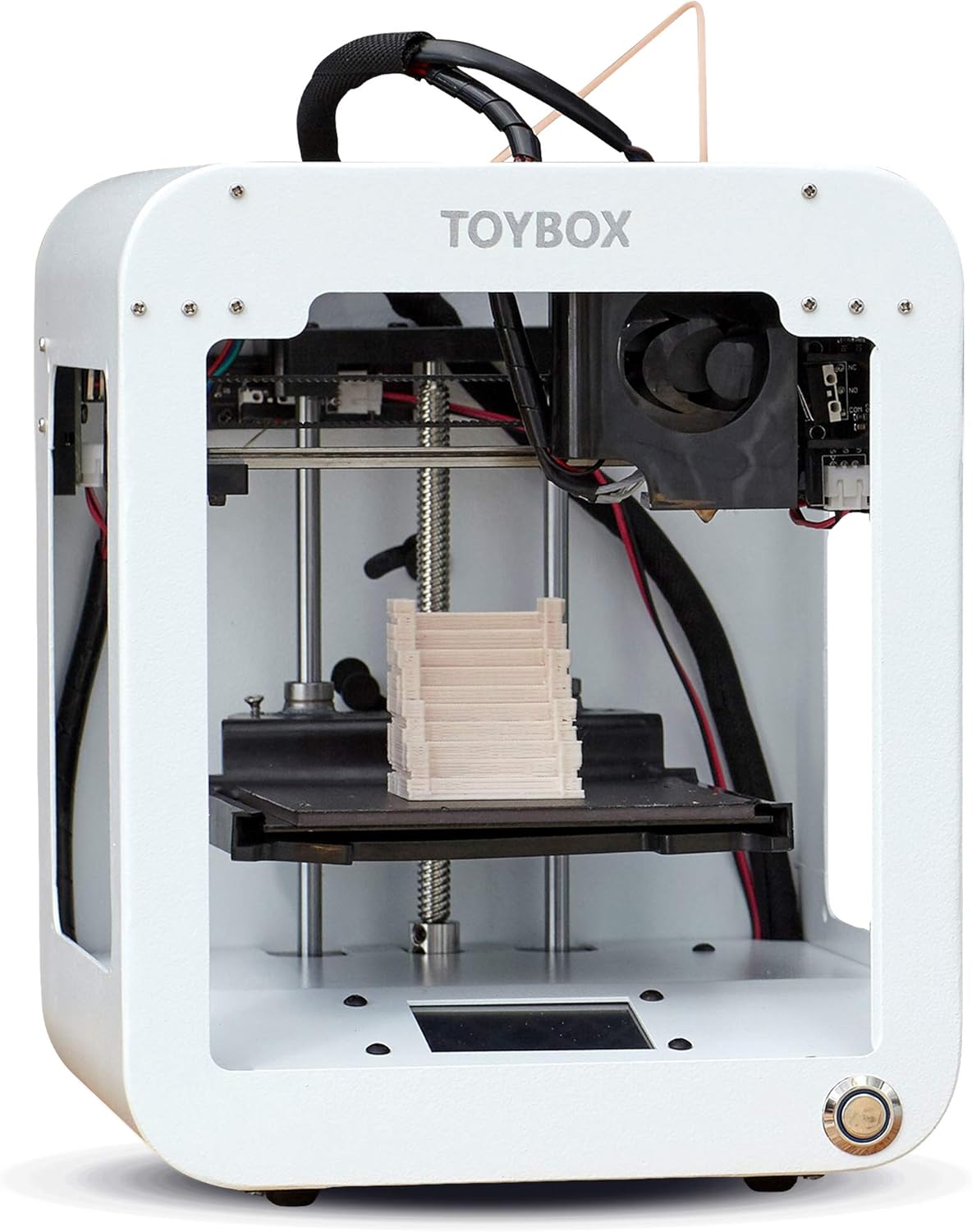Compare Ender 3 vs Ender 3 PRO vs Toybox
Comparison between the best 3D printers
Choose the best 3D printer at the best price. The cheapest 3D printers are here.
Buy a 3D printer here with 3D Fila.
 |
 |
 |
|
| Model | Ender 3[BUY Ender 3] |
Ender 3 PRO[BUY Ender 3 PRO] |
Toybox[BUY Toybox] |
| Printing Material | Filament | Filament | Filament |
| Estimated price | $210,00 | $258,00 | $299,00 |
| Fabricante | Creality 3D | Creality 3D | Toybox |
| Release Year | 2018 | 2019 | 2024 |
| Print Volume [mm] | 220x220x250 | 220x220x250 | 70x80x90 |
| Printer Size [mm] | 440x440x465 | 440x440x465 | 190x190x230 |
| Weight [kg] | 6,62 | 6,62 | 3 |
| Power Loss Recovery | NO | NO | NO |
| Enclosed printer | NO | NO | NO |
| Bed Leveling | Manual | Manual | Manual |
| Filament End Sensor | NO | NO | NO |
| Bed type | Heated | Heated | |
| Power supply system | Bowden | Bowden | Direct Drive |
| Standard nozzle | 0,4 | 0,4 | 0,5 |
| Maximum Nozzle Temperature [°C] | 255 | 255 | 210 |
| Maximum Bed Temperature [°C] | 110 | 110 | |
| Maximum printing speed [mm/s] | 180 | 180 | 60 |
| Filament holder | YES | YES | YES |
| Camera for supervision | NO | NO | NO |
| Recommended filaments | PLA, TPU, ABS, PETG | PLA, TPU, ABS, PETG | PLA |
| Recommended slicers | Cura, Simplify, Slic3r | Cura, Simplify, Slic3r | Toybox |
| Maximum Resolution [mm] | 0,1 | 0,1 | 0,2 |
| Processor | 8 bits | 32 bits | |
| Display | Mono | Mono | Touchscreen 2,4'' |
| Power Supply | 24V / 270W | 24V / 360W Meanwell | |
| Connectivity | SD / USB | SD / USB | Wi-fi |
| Operating systems | Windows, Mac, Linux | Windows, Mac, Linux | iOS, Android |
| Date of registration in the system | 2021-04-13 | 2021-04-14 | 2024-08-06 |
| Release date | 2018 | 2019 | 2024 |
| Extra features | The Ender 3 V1 is a DIY assembly 3D printer, a sales leader since 2017, standing out for its cost-benefit. With a wide printing capacity, it has a CNC machined structure for precision and stability. It offers high-precision prints with low noise, thanks to its innovative V-profile and pulleys. It has a self-adhesive magnetic platform for easy removal of models and excellent adhesion. The Ender 3 heats up quickly, reaching 100°C in 5 minutes, ideal for agile prints. It includes protection against power failures, allowing you to resume printing after interruptions, saving time and material. | The Ender 3 Pro stands out for its beginner-friendly assembly and easily modifiable structure. With a 350W power supply, it heats up quickly and has a simple application that offers good print quality. However, its motors and fans are noisy, and the interface seems outdated. Assembly is accessible, without the need for advanced techniques, and it has integrated belt tensioners. It includes a detailed guide and supports microSD card and USB. | The Toybox 3D printer is an excellent option for children and beginners. Easy to use, with intuitive setup and simplified operation via an app. The Toybox allows you to print thousands of toys and projects through a user-friendly interface. It has a removable magnetic table that makes it easy to remove printed objects. The filament is PLA, safe for children, and the printing is reliable and error-free. It also offers custom design options, allowing you to create and print drawings and photos. |
| Support for multiple colors and materials (AMS and CFS) | NO | NO | NO |
Notes * |
|||
| Cost-benefit | 6 / 10 | 6 / 10 | 6 / 10 |
| Hardware | 0.5 / 10 | 0.5 / 10 | 0.9 / 10 |
| Screen | . | . | . |
| Print volume | 3 / 10 | 3 / 10 | 3 / 10 |
| Performance | 1 / 10 | 1 / 10 | 0 / 10 |
| [BUY Ender 3] | [BUY Ender 3 PRO] | [BUY Toybox] |
Conclusion |
| In comparing the Ender 3, Ender 3 Pro, and Toybox 3D printers, several factors highlight their strengths and weaknesses, ultimately guiding potential buyers in selecting the best option based on their needs and budget. The **Ender 3** and **Ender 3 Pro**, both from Creality 3D, are renowned for their value, featuring a larger print volume, which allows for a broader range of projects. Both models require manual bed leveling and offer comparable heating capabilities, with heated beds that facilitate printing with various materials. However, the Ender 3 Pro comes with a more advanced 32-bit processor and an improved power supply, enhancing performance and stability. Despite these advantages, both models face limitations with power loss recovery, which might deter users who require reliability in case of interruptions. Conversely, the **Toybox 3D printer** targets a different audience, emphasizing ease of use over advanced features. Its smaller print volume is ideal for beginners or children, allowing them to engage in simple projects without compromising complexity. Moreover, the Toybox uses a more intuitive app-based interface, making it particularly attractive for those who prioritize user-friendliness. However, its lower maximum nozzle and bed temperatures suggest limitations in material versatility compared to its Creality counterparts. In terms of **pricing**, the Ender 3 emerges as the most budget-friendly option, providing commendable print quality and ample features for entry to mid-level users. The Ender 3 Pro, while slightly more expensive, justifies its price with enhanced specifications that may appeal to users seeking more robust performance and capabilities. The Toybox, while positioned as a fun and accessible alternative, does come with a higher price tag, reflecting its unique market niche for beginners and children. In conclusion, potential buyers should carefully consider their printing needs and intended use. For users focused on more extensive projects and advanced materials, the Ender 3 or Ender 3 Pro would be the optimal choice. On the other hand, if the priority lies in a simplified, enjoyable experience—particularly for younger users or those new to 3D printing—the Toybox stands out as a suitable alternative, albeit at a greater cost. |

